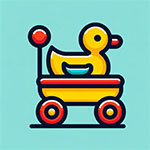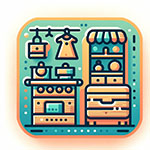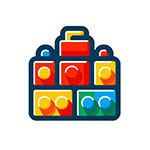As children move into their early preschool years, from 2 to 3 years old, their play becomes more imaginative, complex, and interactive. This age is characterized by rapid growth in language skills, fine and gross motor abilities, cognitive development, and emotional and social awareness. Toys that encourage imaginative play, problem-solving, cooperation, and physical activity are particularly beneficial. Here’s a curated list of the 15 most recommended toys for child development for ages 2 to 3 years, along with insights into their developmental benefits.

Below, you’ll find affiliate and referral links for products I genuinely recommend as a pediatric occupational therapist. If you decide to make a purchase through these links, I may earn a commission at no extra cost to you. This helps keep us up and running. For full transparency, please refer to my disclosure policy. As an Amazon Associate, I earn from qualifying purchases made through these links.
1. Pretend Play SetsDevelopmental Benefits: Kitchen sets, doctor’s kits, and tool benches encourage imaginative play and role-playing, fostering language development, empathy, and understanding of the world. |
2. Construction ToysDevelopmental Benefits: Blocks and construction sets like LEGO Duplo promote creativity, spatial awareness, fine motor skills, and problem-solving abilities as children build and create. |
3. Simple Board GamesDevelopmental Benefits: Age-appropriate board games teach turn-taking, patience, and following rules, while also encouraging cognitive development through memory and matching games. |
4. TricyclesDevelopmental Benefits: Riding tricycles helps improve gross motor skills, coordination, and balance. It also encourages outdoor play and physical activity. |
5. Art SuppliesDevelopmental Benefits: Crayons, markers, paint, and clay support creativity and fine motor skills. Art activities also help with color recognition and self-expression. |
6. Dolls and Action FiguresDevelopmental Benefits: Playing with dolls and action figures fosters imaginative play and storytelling, enhancing language skills and emotional understanding through care-giving and heroics. |
7. Puzzle SetsDevelopmental Benefits: More complex puzzles with more pieces challenge cognitive skills, problem-solving, and hand-eye coordination, promoting perseverance and satisfaction upon completion. |
8. Dress-Up ClothesDevelopmental Benefits: Dress-up play encourages imagination, storytelling, and empathy, allowing children to explore different roles and scenarios. |
9. Sandbox ToysDevelopmental Benefits: Playing in a sandbox with shovels, buckets, and molds promotes sensory play, fine motor skills, and creativity, while also teaching about textures and physical properties. |
10. Play Dough SetsDevelopmental Benefits: Manipulating play dough helps develop fine motor skills and creativity. It can also be a soothing sensory activity that promotes calmness and focus. |
11. Musical InstrumentsDevelopmental Benefits: Toy drums, keyboards, and other instruments introduce children to music, rhythm, and sound exploration, enhancing auditory skills and possibly sparking a lifelong interest in music. |
12. StorybooksDevelopmental Benefits: Reading together fosters language development, listening skills, and a love for reading. It also enhances bonding with caregivers. |
13. Interactive Learning ToysDevelopmental Benefits: Toys that teach numbers, letters, shapes, and colors through interactive play support cognitive development and early literacy and math skills. |
14. Balance BoardsDevelopmental Benefits: These promote physical development, balance, and coordination. They also encourage imaginative play, as children find various uses for them. |
15. Outdoor Play EquipmentDevelopmental Benefits: Slides, swings, and climbing frames develop gross motor skills, encourage physical activity, and offer opportunities for social interaction and cooperation with peers. |
Toys for children aged 2 to 3 years should be engaging, stimulating, and offer a balance between educational content and fun. The toys listed above are designed to support a wide range of developmental areas, ensuring that playtime is an enriching experience that fosters growth, learning, and creativity.





